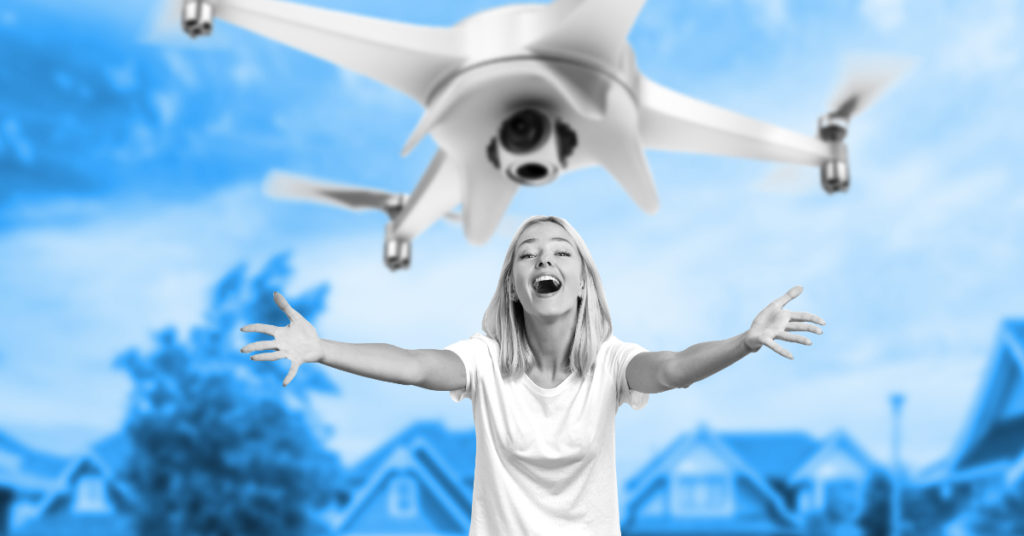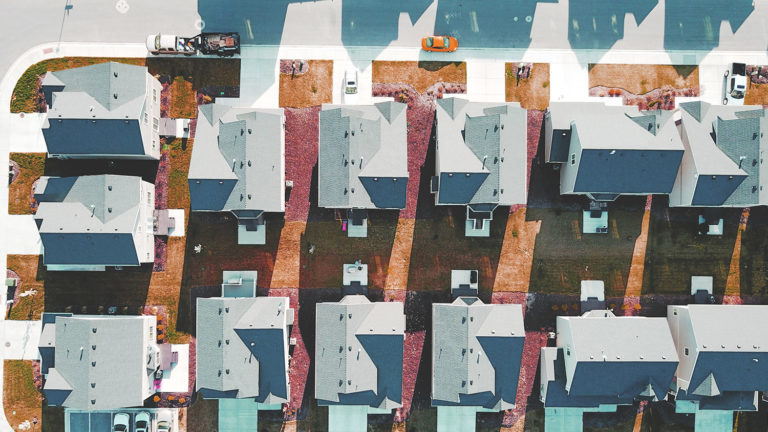
Drone video tours of properties offer great marketing for both resort-style living communities and part-time rentals. Agents can use cinematic reveals, pans, orbits, and blast off shots to help tell a compelling story.
Drones can take awesome aerial images, which provide a unique perspective for featuring a property. You can use drones for all types of real estate listings, including residential homes, resorts, land, commercial properties, and more. Current drone camera technology can capture still images, video, and even 360-degree panoramas.
Here are some essential tips for using drones for real estate:
- Try to keep yourself and any non-related subjects out of the pictures
- Don’t capture slanted horizons
- Don’t capture cloud shadows on a large property
In the real estate industry, you often hear “location, location, location.” One of the most significant benefits of using drones for real estate is the ability to view a property’s location concerning nearby attractions, amenities, parks, etc. An birds eye view is the best way to capture the entirety of this layout.
Great storytelling is key to getting more listings and selling more properties. Buyers want to know all about the home they’re about to buy, and sellers want to list their property with the best agents who have all of the trade’s latest tools. The Multiple Listing Service (MLS), references several details about using aerial shots as the “Featured” photo. Also, organizations like the National Association of REALTORS® (NAR) indicate that using drones for real estate is quickly becoming the industry’s new standard, and innovative companies are using drones for real estate to attract clientele.
According to some numbers from RISMedia, listing agents who use drones for real estate listings could see an increase as high as 73% and deal closing increases as high as 68%. With these kinds of numbers, agents could see returns that add up to tens of thousands of dollars per year.
If you’re a real estate professional and you want to start using drones, not so fast. It’s not as simple as buying a drone, and operating it. To use drones for real estate, professionally, you need to be a commercially licensed drone pilot or remote pilot, as the FAA calls it. Licensing involves taking an FAA examination covering aviation topics ranging from airspace regulations and restrictions to aviation physics. You also have to keep in mind federal regulations, local restrictions can prohibit flights anywhere from state parks to state infrastructure. A local ordinance can even restrict where you can and can’t launch from in certain cities.
Privacy is also a concern when flying drones. Many people are nervous and skeptical about having drones flying around their neighborhood. People will be curious about your intentions with your drone. It is your responsibility to educate them on the rules and regulations politely. As long as you are operating professionally, you should be fine.
The Mavic Air 2 is the drone that will best fit most agents’ needs. It’s portable and lightweight, while still managing to pack in a half-inch sensor for high-quality images and video. Tons of automated features mean you can fly and get the pictures you want or shoot video and the drone will avoid obstacles and track your subject on it’s own. You’ll even get 60 FPS 4K video—something that still isn’t available in more expensive models—and Spotlight, an automated flight mode pulled from DJI’s pro-grade Inspire drone.






